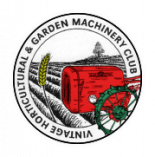Home › Forums › General › Help and information › Douglas interplant hoe and gapper › Reply To: Douglas interplant hoe and gapper
Just to add a little more to Charlie’s post you will need to understand that most seed drills meter out a measured quantity of seed for a given distance travelled; they make a groove in the soil, pour a measured amount of seed into the bottom of the groove then cover it over in one continuous operation. This results in a continuous row of seedlings once they’ve germinated and so a gapper was used to take out unwanted seedlings and create gaps in the rows so that the plants could expand and grow into the gaps. If it wasn’t done you would end up with too many plants fighting each other for the available nutrients in the soil and this would consequently produce a poor crop of dwarf plants rather than a good crop of fewer but healthier and larger plants, which is what most people would aim at.
You could always do the same job by hand which would be costly and tie up a farm labourer for days. It was easier to pay a youngster to do it and buy a machine he could use so he didn’t get it wrong.
I hope that goes some way to explaining why these were used; these days seed is more expensive and modern seed drills can give a more precise delivery, so gappers have passed into history.
I hope that helps your understanding of a unique type of machine. Enjoy it, and I would recommend planting some sugar beet seed in the spring so you can try it out!
